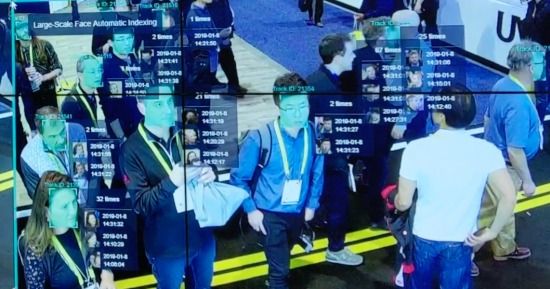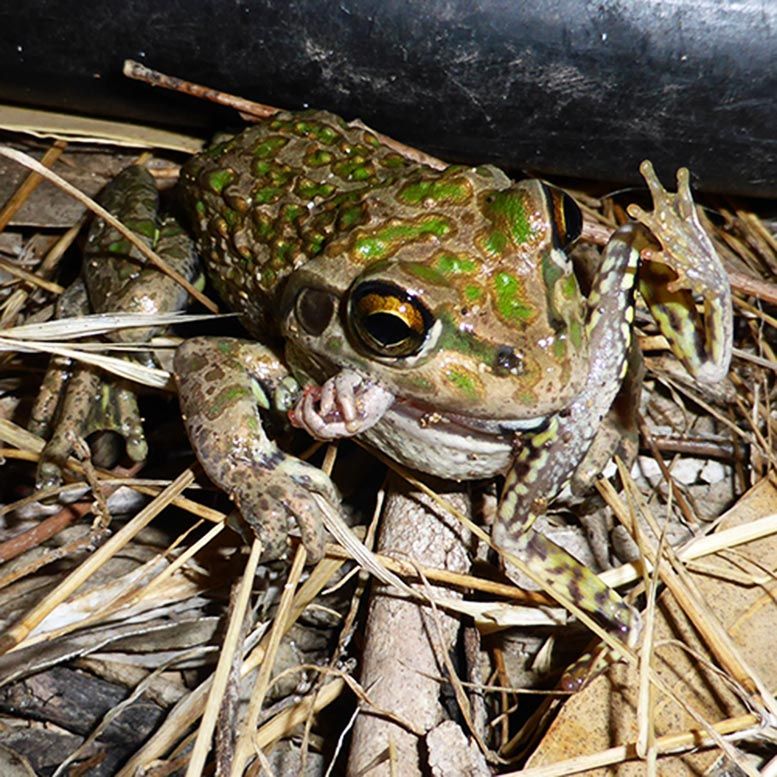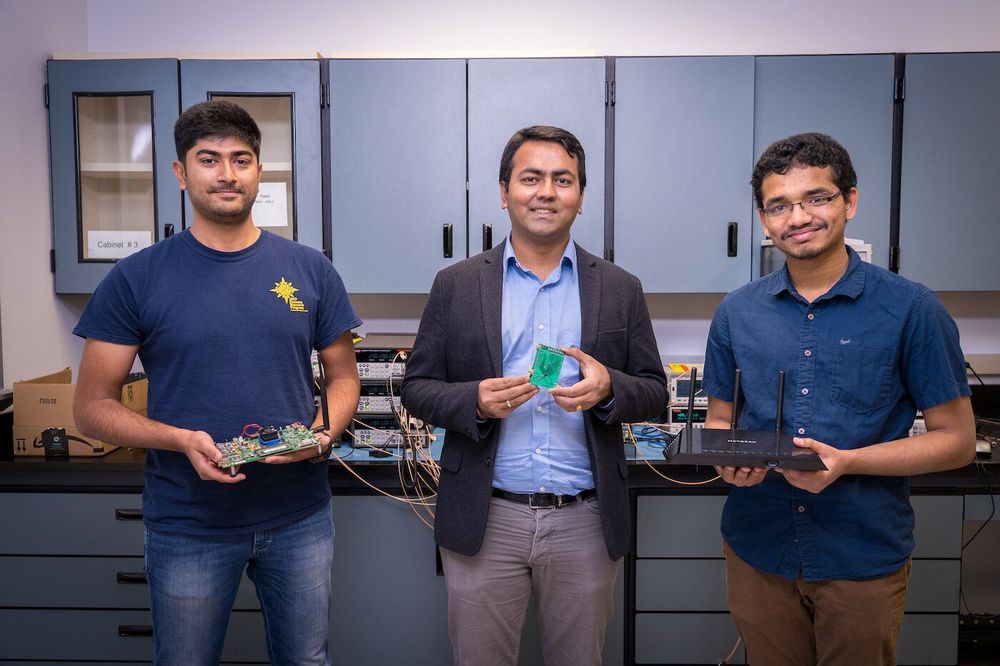Click on photo to start video.
This is the future of housing.



“Facial recognition is a uniquely dangerous form of surveillance. This is not just some Orwellian technology of the future — it’s being used by law enforcement agencies across the country right now, and doing harm to communities right now,” Fight for the Future deputy director Evan Greer said in a statement shared with VentureBeat and posted online.
Members of the United States Congress introduced a bill today, The Facial Recognition and Biometric Technology Moratorium Act of 2020, that would prohibit the use of U.S. federal funds to acquire facial recognition systems or “any biometric surveillance system” use by federal government officials. It would also withhold federal funding through the Byrne grant program for state and local governments that use the technology.
The bill is sponsored by Senators Ed Markey (D-MA) and Jeff Merkley (D-OR) as well as Representatives Ayanna Pressley (D-MA) and Pramila Jayapal (D-WA). Pressley previously introduced a bill prohibiting use of facial recognition in public housing, while Merkley introduced a facial recognition moratorium bill in February with Senator Cory Booker (D-NJ).
The news comes a day after the Boston City Council in Pressley’s congressional district unanimously passed a facial recognition ban, one of the largest cities in the United States to do so. News also emerged this week about Robert Williams, who’s thought to be the first person falsely accused of a crime and arrested due to misidentification by facial recognition.
In an era of digital eavesdropping where hackers employ a variety of means to take over built-in video cameras, peruse personal digital data and snoop on cellular conversations, researchers have finally seen the light.
Literally.
Israeli researchers report that they successfully tapped into speech and music inside an apartment simply by focusing on a light bulb.

“The state government should consider managing the invasive population of spotted-thighed frogs at Streaky Bay. This should include education programs to inform people about what to do if they find a frog, as well as the feasibility of exterminating the population in South Australia.
“Importantly, if you do see one of these critters in your travels – leave it be. We don’t want it hitchhiking any further.”
Reference: ” Indiscriminate feeding by an alien population of the spotted-thighed frog (Litoria cyclorhyncha) in southern Australia and potential impacts on native biodiversity” by Christine M. Taylor, Gunnar Keppel, Shaun O’Sullivan, Stefan Peters, Gregory D. Kerr and Craig R. Williams, 9 April 2020, Australian Journal of Zoology. DOI: 10.1071/ZO19042
Pleased to have been the guest on this most recent episode of Javier Ideami’s Beyond podcast. We discuss everything from #spaceexploration to #astrobiology!
In this episode, we travel from Ferdinand Magellan’s voyage to the first mission to Mars with Bruce Dorminey. Bruce is a science journalist and author who primarily covers aerospace, astronomy and astrophysics. He is a regular contributor to Astronomy magazine and since 2012, he has written a regular tech column for Forbes magazine. He is also a correspondent for Renewable Energy World. Writer of “Distant Wanderers: The Search for Planets Beyond the Solar System”, he was a 1998 winner in the Royal Aeronautical Society’s Aerospace Journalist of the Year Awards (AJOYA) as well as a founding team member of the NASA Astrobiology Institute’s Science Communication Focus Group.
EPISODE LINKS:
Bruce web: https://www.forbes.com/sites/brucedorminey/#47e297264d03
Distant Wanderers Book: https://www.amazon.es/Distant-Wanderers-Search-Planets-Beyond/dp/1441928723
Renewable Energy World: https://www.renewableenergyworld.com/author/bruce-dorminey/#gref
Bruce’s Twitter: https://twitter.com/bdorminey
INFO:
Podcast website: https://volandino.com
Spotify: https://open.spotify.com/show/3O74ctu6Hv5zZdHYT9Ox3Z
Apple Podcasts: https://podcasts.apple.com/us/podcast/beyond/id1509949724
RSS: https://volandino.com/feed/podcast
Full episodes playlist:
OUTLINE:

A CNN crew was arrested while giving a live television report Friday morning in Minneapolis — and then released about an hour later — as the crew covered ongoing protests over the death in police custody of George Floyd.
State police detained CNN correspondent Omar Jimenez, his producer and his photojournalist shortly after 5 a.m. CT (6 a.m. ET) as Jimenez was reporting live from a street south of downtown, near where a police precinct building was earlier set ablaze.

More portable, fully wireless smart home setups. Lower power wearables. Batteryless smart devices. These could all be made possible thanks to a new ultra-low power Wi-Fi radio developed by electrical engineers at the University of California San Diego.
The device, which is housed in a chip smaller than a grain of rice, enables Internet of Things (IoT) devices to communicate with existing Wi-Fi networks using 5,000 times less power than today’s Wi-Fi radios. It consumes just 28 microwatts of power. And it does so while transmitting data at a rate of 2 megabits per second (a connection fast enough to stream music and most YouTube videos) over a range of up to 21 meters.
The team will present their work at the ISSCC 2020 conference Feb. 16 to 20 in San Francisco.
Will we ever live on Mars?
Since the dawn of the Space Age, the planet Mars has been the focus of two ambitious projects. One is the search for life forms native to the planet; the other is human colonization.
For decades, Mars colonization advocates have been promising potential settlers that the time for leaving Earth is nearing. In fact, in terms of producing the actual space hardware—the capability to transport large numbers of passengers into space and the engines and life support to ferry them safely to Mars—we’re not much closer to a Mars colony than we were in 1972, when the last Apollo lunar mission returned to Earth, so don’t sell your house on Earth just yet. On the other hand, we’ve had one mind-blowing discovery after another about Mars as a result of unmanned exploration conducted over the last decades by NASA.
The evidence that the planet is home to microscopic lifeforms—something akin to Earth’s bacteria—has been accumulating slowly, but consistently. While few astrobiologists are ready say that, yes, there’s life there, until we have a photo of microorganisms swimming in the microscope field, that moment is really approaching. And we’ll probably get to it long before the first astronaut boots cast their prints into the Martian surface dust.
At 500 square feet, ICON’s stylish new structure was 3D-printed over the course of several days—but it only took 27 hours of labor to construct. The building will serve as a welcome center at Austin’s new Community First! Village—a 51-acre development that will provide affordable housing to men and women coming out of chronic homelessness. Six new 3D-printed homes will be added to the village by the end of this year—and ICON says that they can be built at significantly less cost than conventional homes.
A year ago, ICON proved it could 3D print a home you’d actually want to live in. Now, it’s building a cluster of 3D-printed homes for the homeless.